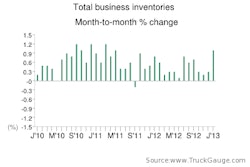Federal Motor Carrier Safety Administration Administrator Anne Ferro said she expects a rule mandating the use of electronic onboard recorders to be proposed by September of this year.
Ferro and other Department of Transportation administrators testified Thursday, March 14, at a hearing held by the House transportation committee’s Highways and Transit Subcommittee, where they were asked to update subcommittee members on progress on initiatives and rules required by 2012’s MAP-21 highway funding law.
MAP-21 requires FMCSA to implement an electronic log mandate by the end of the law’s 27-month life.
As a follow up to Ferro’s testimony Rep. Thomas Petri (R-Ore.) — the subcommittee’s chairman — questioned the rigidity of a “one size fits all” EOBR rule that doesn’t offer flexibility for individual situations. Ferro said she and the agency have taken that into account, and a uniform electronic logging rule “is a very strong one as it pertains to safety and ensuring everyone’s operating on a level playing field.”
Most companies that switch to electronic logs switch “very effectively and very profitably,” Ferro said. “They’re finding it’s a very, very efficient mechanism” for tracking on-duty status. “And over time, sometimes almost immediately, drivers prefer it as well.”
Ferro said four factors comprise the rule: Technical specifications used for EOBR devices, ensuring drivers are not harassed, ensuring any support documents and paperwork are reduced and streamlined and the EOBR requirement itself.
Changing topics slightly, subcommittee ranking member Rep. Peter DeFazio (D-Ore.) questioned directly after Petri the impact of detention time on hours-of-service and what FMCSA planned to do to compensate.
Ferro said the agency is currently studying detention time, and results are expected to be had by 2015. She also said provisions in MAP-21 allow the agency to “take action” against a shipper or receiver that coerces a driver to operate outside of their hours-of-service requirements either by economic leverage or even physical harm.
Later in the hearing, Rep. Markwayne Mullen (R-Okla.) pressed Ferro on why the agency denied the American Trucking Associations’ request to delay the effective date of the upcoming hours-of-service (July 1). Mullen said that FMCSA itself estimates the industry will share a $300 million cost on training and implementing the rule.
ATA had asked FMCSA to delay the rule’s implementation until a court case between the two — and pertaining to the hours rule — had been completed, so that fleets know what exactly they should be training employees how to do.
Ferro said that the agency had denied ATA’s request because it centered around the court case — a hearing for which is set to take place March 15 — rather than the rule itself, which was issued 15 months ago.
Mullen took exception to FMCSA’s response to ATA, in which the agency said ATA had not “demonstrated good cause to delay” the effective date. “What is $300 million?” Mullen said .”I’m a small business owner, and the only reason I sit in front of you is because I got frustrated with things just like that. It seems very simple — Why can’t we just get an extension.”
Ferro said that the rule is about safety, and she’s confident it will be upheld in court. “At the core of this rule is safety on our highways, for all of the people who travel in a truck or in a bus and those in or around those vehicles.”
Per MAP-21, the agency is also working on establishing a drug and alcohol clearinghouse that will provide fleets pre-employment information on driver applicants about prior drug and alcohol tests and test refusals. “So they can thereby avoid hiring someone not qualified to operate a commercial vehicle,” Ferro said.
A proposed clearinghouse rule is expected this spring.
Also in the works is research pertaining to 34-hour restart provisions, examining insurance minimums and “assessing crash rates under new agricultural exemptions” that went live today, Ferro said.
Victor Mendez, Administrator of the Federal Highway Administration, updated the subcommittee on the required study on truck size and weight limits.
FHWA, per MAP-21, is studying the impact of increasing allowable truck weight to 97,000 pounds on six-axle configurations. Also included in the study are looks at “longer combination vehicles.”
“We will provide a data driven, objective analysis looking at issues that have to be balanced,” Mendez said. “Like highway safety, the impact on infrastructure, transportation of goods throughout our nation in a safe manner — how that plays out economically in vehicle configuration.”
Mendez said FHWA will be hiring a consultant to help with the study and taking input from all stakeholders.













